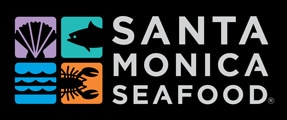Sustainability Rating:Gray – Unranked What:A delicious member of the snapper family When:Available year-round Where/How:Where: Costa Rica How: Wild caught; longline Back to Product Guide Characteristics Silk Snappers can be identified by the yellow iris (Red Snapper have a red iris). They have a red body that’s slightly darker on top and have a thin yellow line running longitudinally …
Snapper, Lane
Sustainability Rating:Grey – Unranked What:A delicious member of the snapper family When:Available Spring/Summer with sporadic catches Winter/Fall Where/How:Where – Costa Rica How – Wild caught; hook and line Back to Product Guide Characteristics Lane snapper are regarded as a great eating fish – mainly because their own diet is so varied. This tasty fish feeds on crabs and …
Snapper, Colorado
Sustainability Rating:Grey – Unranked What:One of the recognized species in the Lutjanus genus of snappers. When:Sporadic availability Where/How:Where: Eastern Pacific: southern California, USA to Panama How: Wild Caught; longline Back to Product Guide Characteristics Colorado snapper is not often available – mainly due to restrictive management put in place to help manage populations. However, when we do get this …
Snapper, American Red
Sustainability Rating:Yellow – Good Alternative What:A delicious member of the snapper family When:Sporadic Availability Where/How: Where – Gulf of Mexico, South Atlantic How – Wild Caught; Longline Back to Product Guide Characteristics True American Red Snapper is not often available – mainly due to restrictive management put in place to help populations rebuild. All that good managment means …
Smelt
Sustainability Rating:Yellow – Good Alternative What:Think of smelt as tasty freshwater sardines! When:Available Year-Round Where/How:Where – Canada, USA How – Wild Caught/Gillnet, Trawl Back to Product Guide Characteristics These frozen smelt have a delicate sweet taste and range from 3 – 5”. They come packed in 11/1# units. For Your Menu Delicious deep fried, some call them “fries …
Skate
Sustainability Rating:Red – Avoid What:We refer to the edible fins of the skate as “wings”. When:Available Year-Round Where/How:Where – Virginia, Delaware, Massachusetts, Maine How – Trawl Back to Product Guide Characteristics Skate has a flavor somewhat similar to scallops – a fact that seems to support unfounded rumors that round pieces cut from large skate wings used to …
Shrimp, Wild Blue
Sustainability Rating:Yellow – Good Alternative What:Fresh wild Blue Mexican Shrimp caught by small panga boats. Available through Special Order Only (Order by Thursday for Wednesday Delivery) Packed in 20lb cases When:Seasonal (September-March) Where/How:Where: Sea of Cortez; Gulf of California How: Wild-Caught; Drift net, Cast nets, and bottom trawl from panga boats Back to Product Guide Characteristics Boat-to-Table artisan …
Shrimp, Selva
Sustainability Rating:Yellow – Good Alternative What:Selva Shrimp® are premium-quality black tiger prawns naturally raised in mangrove forests. Selva Shrimp® not only offer a sustainable seafood choice, but also create a direct link between consumers and smallholder farming communities in Southeast Asia. Sustainable shrimp raised by mother nature – Selva Shrimp® are raised in integrated mangrove forest farms with no feed, fertilizers …
Shrimp, Rock
Sustainability Rating:Yellow – Good Alternative What:A deep water shrimp harvested in Florida and Mexico that gets it’s name from its incredibly hard exoskeleton. When:Available year-round Where/How:Where – Florida, Mexico How – Wild caught, mid-water trawl Back to Product Guide Characteristics Rock shrimp are firm and lean with a distinct sweet flavor that some compare to spiny lobster. Cook these …
Shark, Thresher
Sustainability Rating:Yellow – Good Alternative What:According to NOAA, “Thresher sharks are one of the most commonly harvested sharks off the U.S. West Coast. Initially developed in the late 1970s, the West Coast drift gillnet fishery rapidly expanded as market demand grew, and harvests of thresher shark peaked in 1985 at more than 1,000 metric tons. As the market and prices …
